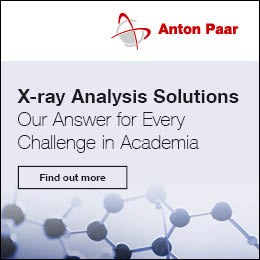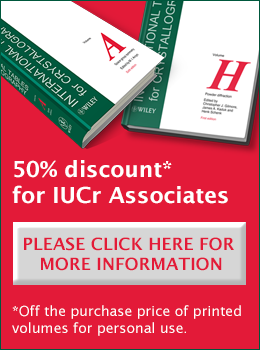
Obituary
Patrick J. McArdle (1945–2024)
![Thumbnail [Thumbnail]](https://www.iucr.org/__data/assets/image/0009/158337/Thumbnail.jpg)
Professor Patrick J. McArdle from the University of Galway, Ireland, passed away unexpectedly but peacefully, at home in Galway, surrounded by his family on 2 January 2024, and was laid to rest in Rahoon Cemetery, Galway, on 5 January 2024.
Pat was a professor of inorganic chemistry with expertise in X-ray crystallography and nuclear magnetic resonance (NMR), and has published over 400 papers on a range of topics, from small-molecule pharmaceuticals and organometallics to carbohydrates. Born and raised in Drogheda, County Louth, Pat’s first job was at his family hotel, The White Horse. He pursued his BSc and PhD (1962–1969) from University College Dublin (Tautomerism in Some Binuclear Metal Carbonyl Derivatives) and a DSc (1989) from the National University of Ireland Galway (now University of Galway), where he worked until his passing. Pat was also the last academic staff member in Galway to give chemistry lectures in Irish until he retired (as the Head of the School of Chemistry) from teaching in 2010. He was elected to the Royal Irish Academy on his first application in 1998.
Pat’s research work initially concentrated on the organometallic chemistry of iron and later included the synthesis and reaction kinetics of quadruply bonded metal complexes. He started working in crystallography in the early 1980s when the first four-circle diffractometer in Ireland was set up in Galway. He was one of the five founding principal investigators of the Science Foundation Ireland (SFI)- and industry-funded Synthesis and Solid State Pharmaceutical Centre (SSPC) in 2007. The setting up of this Research Centre, led by Kieran Hodnett at the University of Limerick, was very important for chemistry in Ireland as it was the first research centre funded by SFI that did research in chemistry. At the SSPC, Pat’s work concentrated on solid-state analysis of pharmaceutical solids, the use of sublimation for crystal growth and cocrystal synthesis, crystal growth mechanisms and theoretical analysis of solid-state interactions. Together with Pavel Karen (University of Oslo, Norway) and Josef Takats (University of Alberta, Edmonton, Canada), starting in 2009, he worked on an IUPAC project that examined the use of the oxidation state in chemistry. After 10 years of effort, the first comprehensive definition of the oxidation state was produced together with an 86-page technical report. He was also a member of the International Program Committee for the 2017 IUCr Congress in Hyderabad, India.
Pat’s passing is a great loss for the crystallography community as well as the University of Galway. Having trained under eminent scientists – such as Jack Lewis at University College London, UK, and Massachusetts Institute of Technology, Cambridge, USA (1969–1972), during his postdoctoral work; Frank Albert Cotton at Texas A&M (1978) and Jack Norton at Princeton and Columbia, USA; and Guy Dodson at the University of York, UK (1991), on sabbatical – Pat developed a passion for crystallography and contributed several computational methods for structural analysis. In 1996, he developed and published the ABSEN program to predict all possible space groups in different orientations from an HKL file. He also developed the ORTEX program to visualise ORTEP diagrams interactively. His interest in computing and crystallography led him to develop the OSCAIL software that integrated several crystallographic tools and is widely used in Ireland to date.
Pat was a very hands-on researcher. When he and his colleague Desmond Cunningham sourced Ireland’s first diffractometer in 1981, a second-hand Hilger & Watts Y290 four-circle diffractometer from Canada, Pat had the confidence to take it all apart and put it back together in a functioning form. He believed in innovation but also respected heritage. True to this, he never got rid of older goniometer setups when the diffractometers were upgraded, and used them to train his students. This equipment is still on display in the crystallography labs in Galway and is soon to be added to the National Museum of Ireland’s National Scientific Instruments Collection. Pat sought to bring a modern influence on the direction of capital spending on facilities in the new Science building in Galway, which opened in 1974. In collaboration with Professor R. N. Butler, this effort also brought the first 100 MHz NMR spectrometer to Ireland, which was followed by a 13C spectrometer and the first high-field NMR spectrometer.
Pat was also an innovator who was not afraid of drilling a hole through a vacuum oven to modify it in order to control the temperature of his sample for the sublimation process to generate single crystals. He believed in sharing the knowledge he gathered. To that end, his YouTube channel has tutorial videos for the tools he has incorporated in OSCAIL on how to set up a cyclone vacuum at home for cleaning, and as an avid cyclist, on how to prevent your cycle chain from falling out.
In his colleague Niall Geraghty’s words, “Pat is a renaissance man”, who could talk about any topic from molecular orbital theory to history, art, opera, film, theatre and politics. He was a man of outstanding intellect and someone who was interested in everything till the end. His very humble and gentle approach made him a great mentor and a great teacher. Reading through his Condolence Book reveals how many lives he touched and how many people owe their careers to his training.
His dedication was not just to science but also to his family. Pat is survived by his wife Aideen, children Orla, Eoin, Aideen Óg and their families, as well as his siblings and their respective families.
![[Figure]](https://www.iucr.org/__data/assets/image/0010/158338/Figure.jpg)
IUCr note: Professor McArdle was a valued Co-editor of Acta Cryst. E from 2010 to 2019. For a list of the papers he published in IUCr Journals, please click here.
Copyright © - All Rights Reserved - International Union of Crystallography





